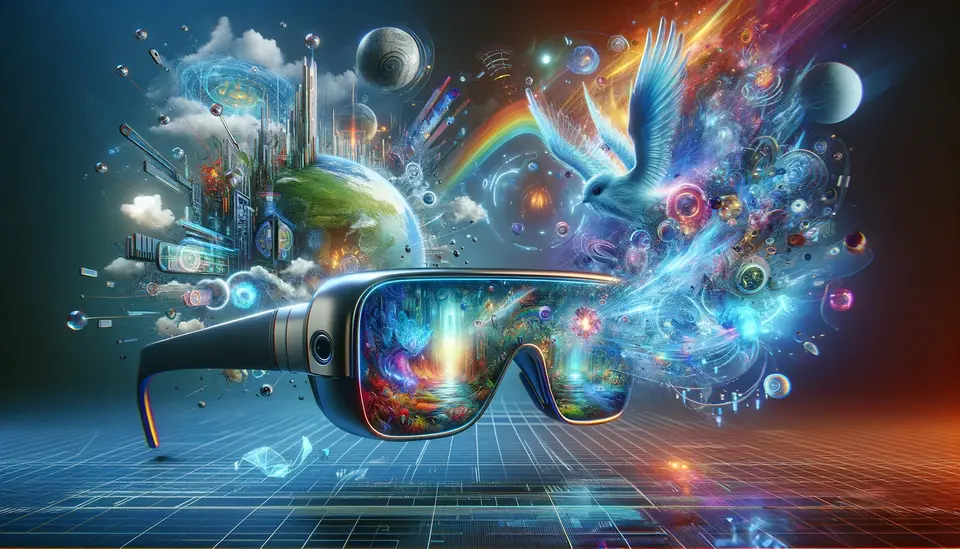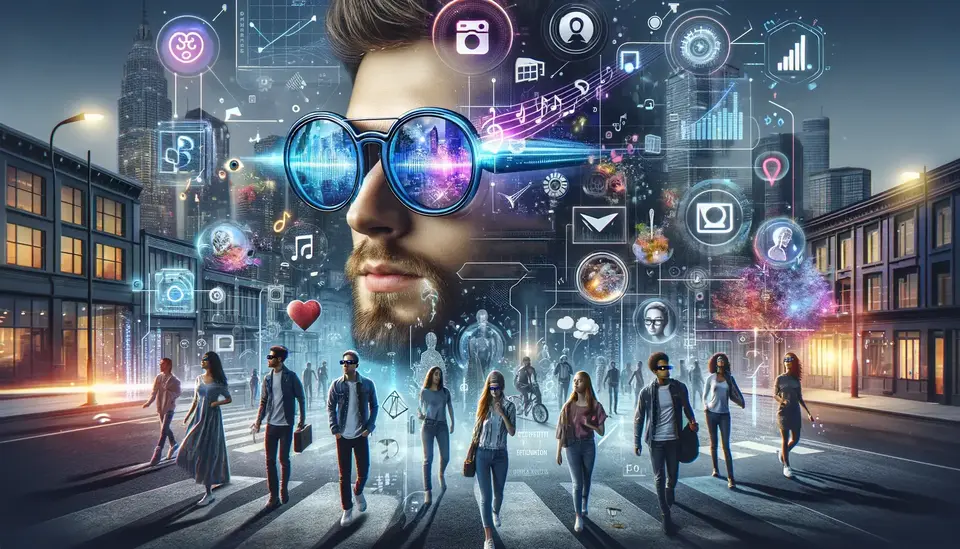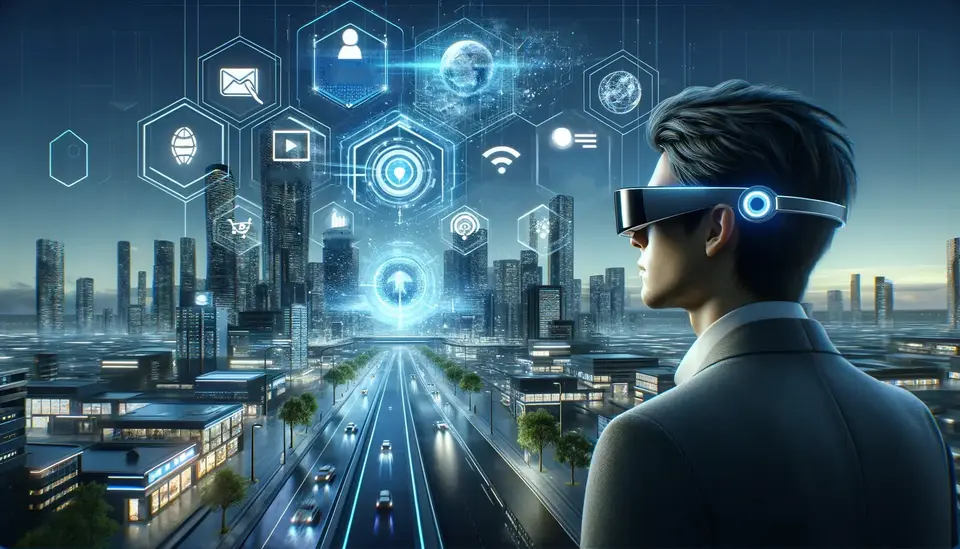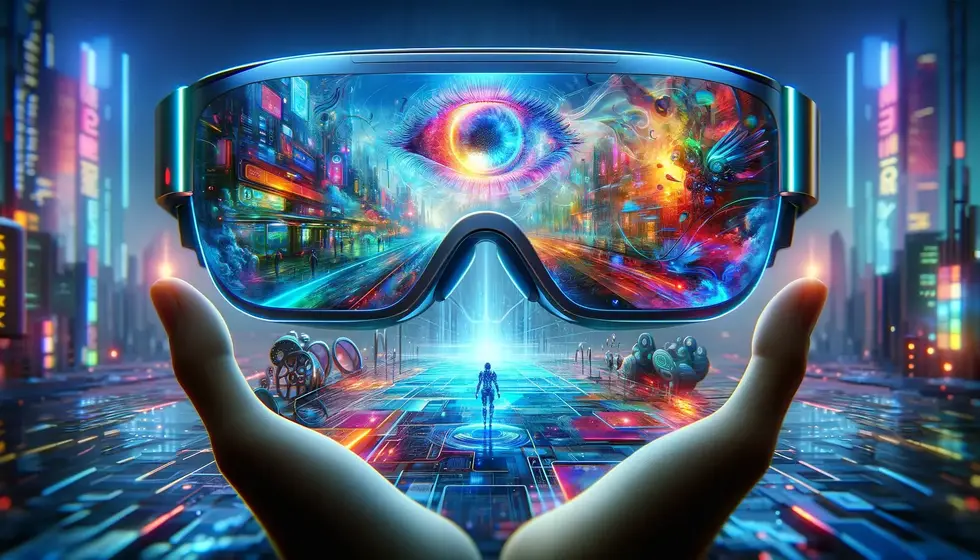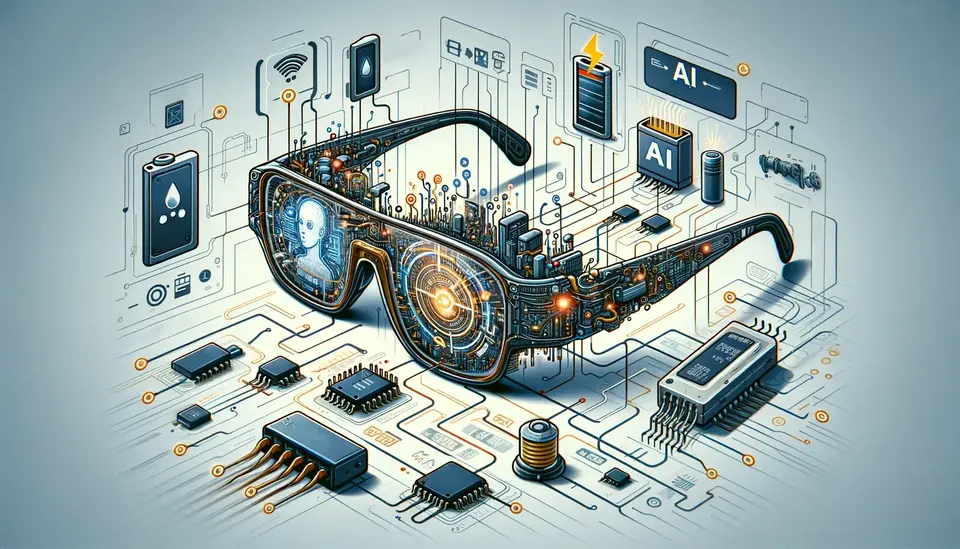Sora's Impact on Smart Glasses Content Creation
Posted on March 1, 2024 8 minutes 1653 words
Table of contents
- 1. Introduction
- 2. The Evolution of Content Creation for Smart Glasses
- 3. Sora’s Technical Features and Benefits for Smart Glasses
- 4. Enhancing User Experience in Smart Glasses with Sora
- 5. Revolutionizing Smart Glasses Content Production with Sora
- 6. Creative and Practical Applications of Sora in Smart Glasses
- 7. The Role of Sora Across Different Industries in Smart Glasses
- 8. Challenges and Future Directions
- 9. The Future of Smart Glasses with Sora
- 10. Conclusion
1. Introduction
A. Overview of Smart Glasses Technology
Smart glasses represent a cutting-edge blend of fashion and technology, offering a hands-free experience with various functionalities, including displaying information, navigation, and augmented reality (AR). As wearable devices, they integrate the digital world into the user’s field of vision, providing an interactive experience.
B. Introduction to Sora and Its Video Generation Capabilities
Sora, developed by OpenAI, is an advanced AI model capable of generating high-fidelity video content from textual prompts. It leverages diffusion models and transformer architecture to create realistic and imaginative scenes, a feature that can be incredibly useful in enhancing the content displayed on smart glasses.
C. The Significance of Sora in Enhancing Smart Glasses Content
The integration of Sora’s video generation capabilities with smart glasses technology signifies a major leap in content creation for wearable devices. It opens up possibilities for more dynamic, engaging, and contextually relevant visual experiences for smart glasses users.
2. The Evolution of Content Creation for Smart Glasses
A. Early Stages of Smart Glasses Development
Initially, smart glasses offered basic functionalities like notifications and simple AR overlays. The content was rudimentary, focusing more on the novelty of the technology rather than immersive user experiences.
B. Challenges in Traditional Content Creation for Smart Glasses
Creating content for smart glasses has been challenging due to the need for it to be unobtrusive, contextually relevant, and visually appealing. Developers have had to balance the limited display capabilities of the glasses with the user’s need for clear and useful information.
C. The Integration of Advanced AI in Smart Glasses Content Development
The integration of AI technologies like Sora into smart glasses content development is revolutionizing the field. It enables the creation of more complex, interactive, and personalized content, transforming how information is presented and interacted with through these wearable devices.
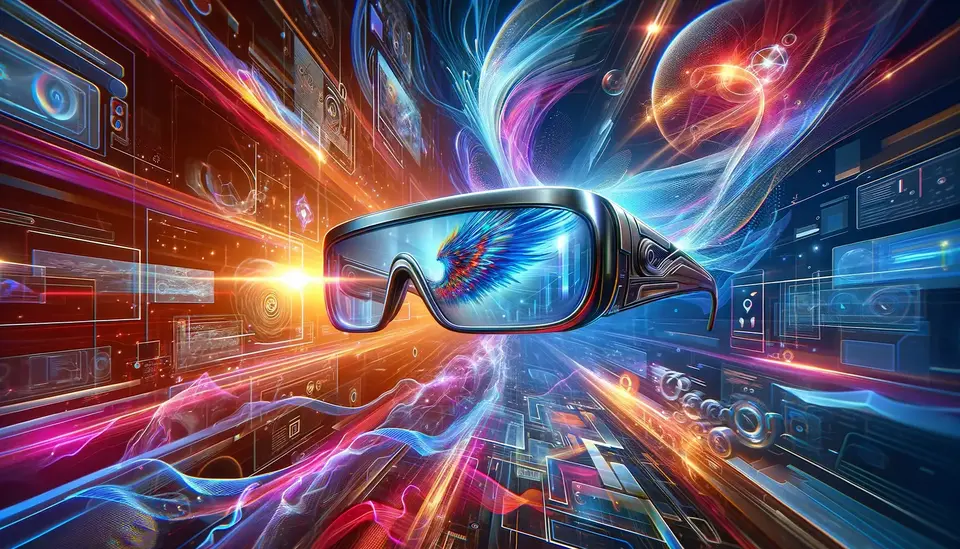
3. Sora’s Technical Features and Benefits for Smart Glasses
A. Exploring Sora as a Diffusion Model
As a diffusion model, Sora starts from a noise pattern and incrementally adds details to create a coherent video output. This approach allows for the generation of detailed and contextually relevant content suitable for the small and intimate display of smart glasses.
B. The Impact of Sora’s Transformer Architecture on Smart Glasses Content
Sora’s transformer architecture is adept at handling diverse types of data inputs, making it particularly suitable for smart glasses, which must cater to a wide range of user contexts and preferences. This architecture enables Sora to generate content that is both relevant and engaging for the wearer.
C. Sora’s Flexibility in Video Generation for Diverse Applications
Sora’s flexibility in video generation, including its ability to handle various resolutions and aspect ratios, is critical for smart glasses. This allows for the creation of content that is not only visually appealing but also fits the unique display parameters of different smart glasses models.
4. Enhancing User Experience in Smart Glasses with Sora
A. The Role of Sora in Creating Immersive Augmented Reality Content
Sora’s advanced video generation capabilities are ideal for enhancing the augmented reality (AR) experiences offered by smart glasses. By generating realistic and contextually relevant visual content, Sora can significantly improve the immersion and interactivity of AR applications, making them more engaging for users.
B. Case Studies: Sora-Enhanced Experiences in Smart Glasses
While specific case studies of Sora-enhanced smart glasses experiences are not available in the provided documents, the potential applications are vast. For instance, Sora could be used to create dynamic and interactive AR tutorials, detailed virtual try-ons in retail, or immersive storytelling experiences in entertainment.
C. Improving Interactivity and Engagement through Sora
Sora can elevate the level of interactivity and engagement in smart glasses by generating content that responds to user inputs and environmental contexts. This adaptability ensures that AR experiences are not only visually appealing but also relevant and responsive to the user’s immediate needs.
5. Revolutionizing Smart Glasses Content Production with Sora
A. Streamlining the Content Creation Process for Smart Glasses
Sora simplifies the content creation process for smart glasses, allowing developers to focus on creativity and user experience rather than technical complexities. By generating high-quality content from textual prompts, Sora reduces the time and effort required to produce engaging AR content.
B. Sora vs. Traditional Content Creation Methods for Smart Glasses
Compared to traditional methods, which often involve detailed 3D modeling and animation, Sora offers a more efficient and flexible approach to content creation. Its AI-driven process enables rapid prototyping and iteration, which is crucial for the fast-paced development cycle of smart glasses applications.
C. The Impact of Sora on Production Efficiency and Scalability
The introduction of Sora into the smart glasses content creation workflow can significantly improve production efficiency and scalability. By automating the generation of complex visual content, Sora allows creators to experiment with innovative ideas and quickly bring new AR experiences to market.
6. Creative and Practical Applications of Sora in Smart Glasses
A. New Horizons in Storytelling and Visual Content Creation
Sora opens up new horizons in storytelling and visual content creation for smart glasses. Its ability to generate detailed and lifelike content allows creators to craft compelling narratives and visual experiences that were previously unattainable in the AR space.
B. Sora in Educational, Training, and Entertainment Applications for Smart Glasses
In educational and training contexts, Sora can be used to create interactive learning modules and simulations. For entertainment, it enables the creation of immersive and interactive AR games and experiences that push the boundaries of conventional storytelling.
C. Future Prospects: Expanding the Capabilities of Smart Glasses with Sora
Looking ahead, the integration of Sora with smart glasses has the potential to expand the capabilities of these devices significantly. As Sora evolves, it could enable more complex and interactive AR experiences, making smart glasses an even more integral tool in various aspects of daily life.
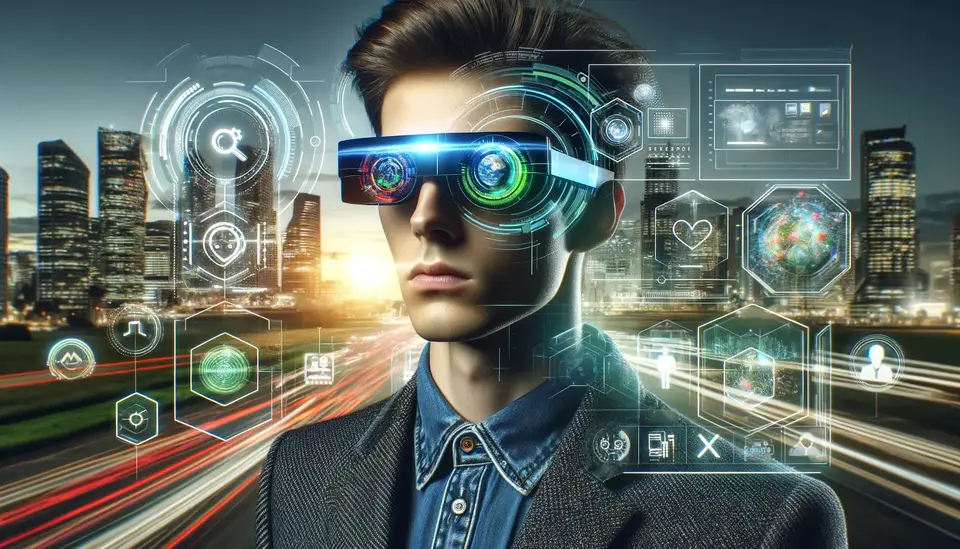
7. The Role of Sora Across Different Industries in Smart Glasses
A. Use Cases in Healthcare, Retail, and Engineering
Sora’s potential for smart glasses extends to various industries. In healthcare, Sora can aid in creating augmented reality (AR) assisted surgical visualizations or patient care instructions. Retail could see an evolution in customer experience with virtual try-ons and product displays. In engineering, Sora can enhance fieldwork with real-time, interactive AR overlays for complex tasks.
B. Sora in Enhancing Customer Experience and Business Operations
Sora can play a pivotal role in enhancing customer experiences and business operations through smart glasses. Its ability to generate contextually relevant and engaging content can transform customer service, product demonstrations, and employee training, providing interactive and immersive experiences.
C. Innovative Industrial Applications of Smart Glasses Powered by Sora
Innovative industrial applications of smart glasses, powered by Sora, include AR for complex machinery maintenance, virtual walkthroughs of architectural designs, and interactive simulations for workforce training. Sora’s advanced video generation capabilities can significantly enrich these applications.
8. Challenges and Future Directions
A. Addressing Technical and Ethical Challenges with AI-Driven Smart Glasses
The integration of Sora into smart glasses presents technical challenges like ensuring seamless AR integration and ethical issues like privacy concerns. Addressing these challenges is crucial for the responsible development and adoption of AI-driven smart glasses.
B. Future Enhancements in Sora for Smart Glasses
Future enhancements of Sora for smart glasses could include improved real-time rendering capabilities, more intuitive user interfaces, and advanced personalization features. These developments will likely focus on making the AR experience more seamless and interactive.
C. Ethical Considerations in Smart Glasses Content Creation
Ethical considerations in content creation for smart glasses include user data privacy, content authenticity, and mitigating the risk of misinformation. Developing guidelines and standards for ethical content creation will be vital as this technology evolves.
9. The Future of Smart Glasses with Sora
A. Predictions for the Evolution of Smart Glasses Technology
Predictions for the evolution of smart glasses technology with Sora include more advanced AR experiences, wider adoption in various industries, and an increase in consumer applications. The technology is expected to become more integrated into daily life, offering enhanced interactive experiences.
B. The Long-term Impact of AI Integration on Smart Glasses
The long-term impact of AI integration, particularly through models like Sora, on smart glasses could be transformative. It can lead to smart glasses becoming an essential tool in various sectors, significantly enhancing how we interact with information and our environment.
C. Final Thoughts on the Convergence of AI and Wearable Technology
The convergence of AI and wearable technology, exemplified by the integration of Sora with smart glasses, represents a significant advancement in both fields. It holds the promise of a future where digital information is seamlessly integrated into our physical world, enhancing both work and leisure activities.
10. Conclusion
A. Summarizing Sora’s Impact on Smart Glasses Content Creation
In this blog post, we’ve explored how Sora, OpenAI’s advanced AI model, is revolutionizing content creation for smart glasses. Sora’s cutting-edge video generation capabilities, stemming from its diffusion model and transformer architecture, have significantly enhanced the way content is crafted for these wearable devices, making it more immersive, interactive, and contextually relevant.
B. The Broader Implications for Wearable Tech and AI
Sora’s impact on smart glasses content creation has broader implications for the fields of wearable technology and artificial intelligence. It demonstrates the potential of AI in transforming how we interact with technology on a day-to-day basis, paving the way for more personalized and engaging user experiences. As smart glasses evolve, the integration of AI like Sora will be crucial in shaping their functionality and appeal.
C. Encouraging Continued Innovation in Smart Glasses Development
Finally, the integration of Sora into smart glasses content creation is a call for continued innovation in this space. It highlights the importance of exploring new technological frontiers and pushing the boundaries of what’s possible in wearable tech. As we continue to advance, the collaboration between AI and smart glasses will undoubtedly lead to groundbreaking developments, benefiting various industries and enhancing our daily lives.

